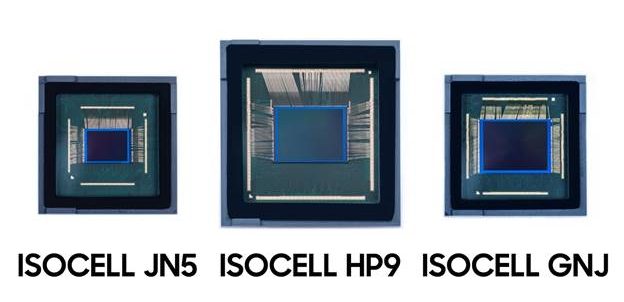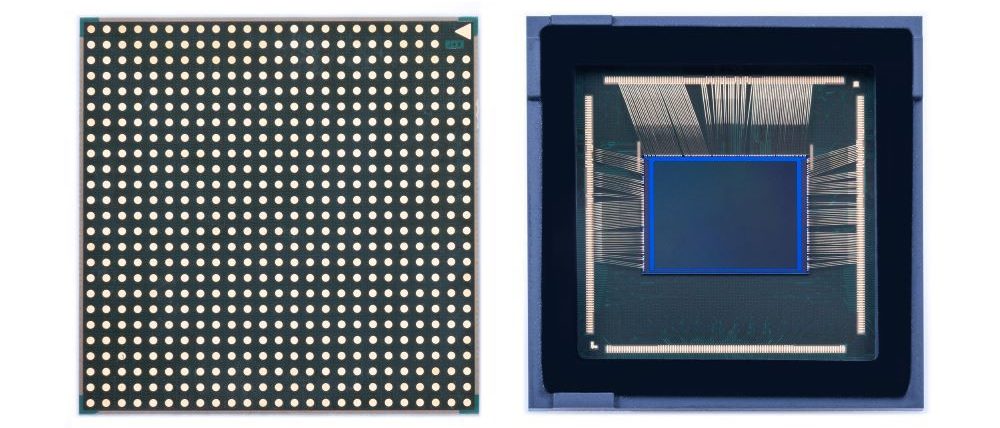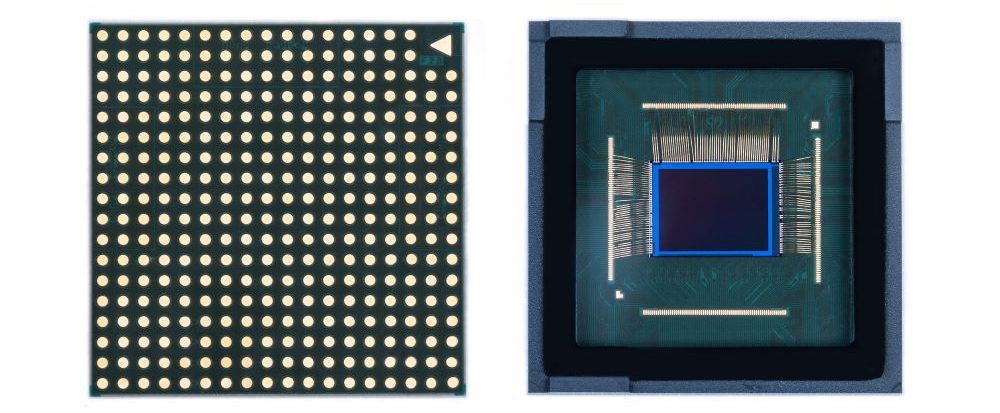- Samsung’s Isocell HP9 sensor features 200 million pixels for high-resolution shots.
- Enhanced light absorption with high-refractive Microlens technology.
- Superior low-light photography with pixel-grouping technology.
- Up to 12x optical zoom with in-sensor zoom modules.
Samsung has introduced a brand-new 200MP telephoto image sensor for use on smartphones to move the limits of mobile photography up a notch.
A new image sensor, Isocell HP9, forms part of the latest development relating to smartphone cameras, laying down better light absorption and focusing performance.
For instance, the Isocell HP9 has 200 million pixels, each 0.56 micrometers in size, with a 1/1.4-inch optical format.
This means that it can capture high-resolution shots in a rather compact device form factor, quite fitting for integration into a smartphone.
“Enhancing image sensor performance and bridging the gap between main and sub cameras to offer a consistent photography experience across all angles is the new direction of the industry,” said Jesuk Lee, Executive Vice President and CTO of the System LSI Sensor Business Team at Samsung Electronics. “We will continue to set industry standards and push technological boundaries with our new lineup of mobile sensors that integrate the latest advancements.”
Light Absorption Technology

It’s for this reason that Samsung has introduced a new material for the high-refractive Microlens on the sensor, which helps better direct light precisely onto the corresponding RGB color filter for enhanced light gathering by the sensor.
Compared to its forerunners, the Isocell HP9 comes with light sensitivity that is 12% better and focuses contrast performance in autofocus by 10%.
All these features increase the overall image quality, especially in difficult lighting conditions.
Low-Light Photography

The pixel-grouping technology embedded in the sensor combines 16 pixels into bigger 2.24-micrometer sensors.
This approach aids in absorbing more light, thereby producing sharper portraits and pronounced bokeh effects while capturing images in low light.
Combined with a 3x telephoto zoom module, the sensor’s 4x in-sensor zoom modules could achieve as much as 12x optical zoom.
This feature would help smartphone users extend the extent of photography capabilities.
Besides the HP9, there are two other image sensor variants with the same resolution of 50MP: the Isocell GNJ and one more with the name Isocell JN5.
Isocell GNJ: Dual-Pixel Technology

The Isocell GNJ is a dual-pixel sensor featuring 50 million pixels, each measuring 1 micrometre, in a 1/1.57-inch optical format.
Its dual-pixel design incorporates two photodiodes per pixel, enabling faster and more accurate autofocus.
The sensor also benefits from Samsung’s new microlens technology for enhanced light absorption and improved pixel isolation to minimise crosstalk.
Isocell JN5: Versatile Application

With 50 million pixels at 0.64 micrometres each, housed in a 1/2.76-inch optical format, the Isocell JN5 is designed for versatility.
It employs dual vertical transfer gate technology to increase charge transfer within pixels, resulting in reduced noise and clearer images in low-light conditions.
The sensor includes phase detection technology and enhanced high dynamic range, making it suitable for use in main and sub-cameras across various focal lengths.
FAQs
Q1: What is the resolution of Samsung’s new Isocell HP9 sensor?
The Isocell HP9 sensor boasts a resolution of 200 million pixels, designed to capture incredibly detailed images.
Q2: How does the Isocell HP9 improve low-light photography?
The Isocell HP9 uses pixel-grouping technology to combine 16 pixels into larger sensors, enhancing light absorption and producing clearer images in low light.
Q3: What is the significance of the high-refractive Microlens technology in the Isocell HP9?
The high-refractive Microlens technology improves light direction onto the RGB color filter, enhancing the overall light gathering and image quality of the sensor.
Q4: What optical zoom capabilities does the Isocell HP9 offer?
When paired with a 3x telephoto zoom module, the Isocell HP9 can achieve up to 12x optical zoom using its in-sensor zoom modules.
Is ISOCELL HP9 Industry’s First 200MP Telephoto Sensor for Smartphones?
The ISOCELL HP9 features 200 million 0.56-micrometer (μm) pixels in a 1/1.4-inch optical format.
With its proprietary high-refractive microlens featuring a new material, the HP9 significantly enhances light-gathering capability by directing more light accurately to the corresponding RGB color filter.
This results in more vivid color reproduction and improved focus with 12% better light sensitivity (based on signal-to-noise ratio 10) and 10% improved autofocus contrast performance compared to the previous product.
Notably, the HP9 excels in low-light conditions, addressing a common challenge for traditional telephoto cameras.
Its Tetra pixel technology merges 16 pixels (4×4) into a large, 12MP 2.24μm-sized sensor, enabling sharper portrait shots — even in dark settings — and creating dramatic out-of-focus bokeh1 effects.
As main cameras in premium smartphones grow in size, the room for telephoto cameras is also increasing.
The HP9’s large optical format makes it suitable for telephoto modules, delivering performance that matches premium main cameras in image quality, autofocus, high dynamic range (HDR) and frames per second (fps).
Powered by a remosaic algorithm, the HP9 offers 2x or 4x in-sensor zoom modes, achieving up to 12x zoom when paired with a 3x zoom telephoto module, all while maintaining crisp image quality.
Does ISOCELL GNJ Integrate Cutting-Edge Pixel Technology Innovations ?
The ISOCELL GNJ is a dual pixel sensor with 50 million 1.0μm pixels in a 1/1.57-inch optical format.
Each pixel houses two photodiodes, enabling fast and accurate autofocus, similar to the way human eyes focus. The image sensor also simultaneously captures full color information for quick focusing with sustained image quality.
The GNJ combines dual pixel technology with an in-sensor zoom function to deliver clearer footage in video mode and higher-resolution images free from artifacts or moiré2 patterns in photo mode.
The newly improved high-transmittance anti-refractive layer (ARL), coupled with Samsung’s proprietary high-refractive microlense, not only boosts light transmission and reduces unwanted reflections but also ensures that dark areas are not overly brightened for more accurate photos with well-preserved image details.
In addition, the GNJ includes an upgraded pixel isolation material in deep trench isolation (DTI) from polysilicon to silicon oxide, minimizing crosstalk between adjacent pixels. This allows the sensor to capture more detailed and precise images.
All of these innovations have been achieved with less power consumption, featuring a 29% improvement in preview mode and 34% in video mode at 4K 60fps.
Does ISOCELL JN5 have Consistent Camera Experience From Every Angle With Broad Color Range and Excellent Autofocus ?
The ISOCELL JN5 features 50 million 0.64μm pixels in a 1/2.76-inch optical format.
Dual vertical transfer gate (Dual VTG) technology increases charge transfer within pixels, substantially reducing noise in extreme low light conditions for clearer image quality.
Leveraging Super Quad Phase Detection (Super QPD), the JN5 adjusts focus by comparing phase differences both vertically and horizontally, catching even the smallest details of rapidly moving objects with minimal shake.
Additionally, the JN5 incorporates dual slope gain (DSG) technology to enhance its HDR.
This technology amplifies the analog light information entering the pixels into two signals, converts them into digital, and then combines them into one data, expanding the range of colors that the sensor can produce.
Implementing hardware remosaic algorithms improves camera shooting speed while enabling real-time zoom in both preview and capture modes without any delay.
The JN5’s slim optical format makes it highly versatile, allowing it to be used across main and sub cameras — including wide-angle, ultra-wide-angle, front and telephoto — promising a consistent camera experience from various angles.
Read More: Samsung Galaxy Unpacked July 2024 Event
